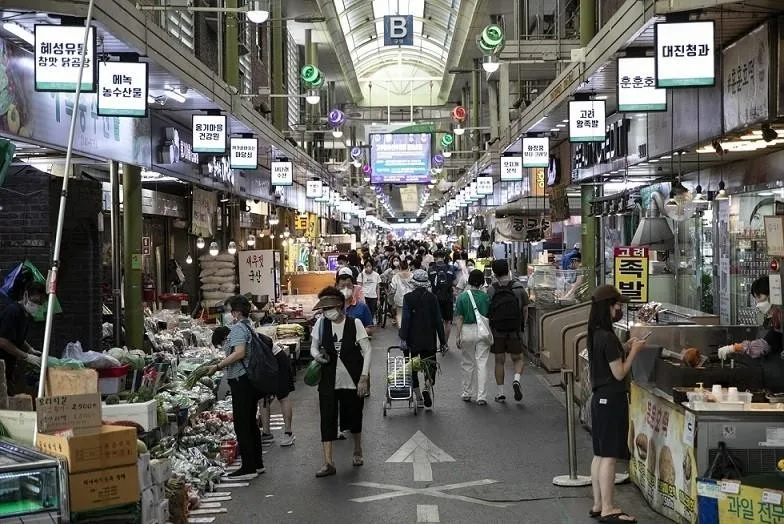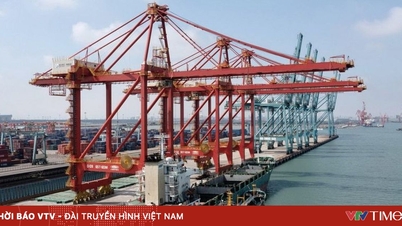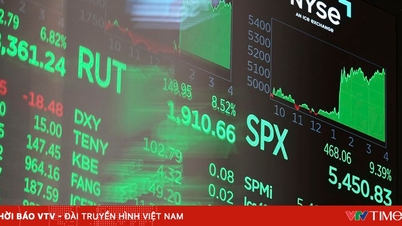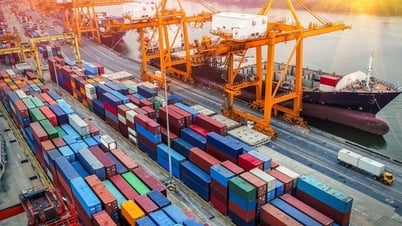OECD raises global growth forecast
The global economic picture is brighter than expected in the first half of 2025, according to the latest report by the Organization for Economic Cooperation and Development (OECD), published yesterday. This is accompanied by more positive forecasts than the report released in June, both in terms of growth prospects and inflation of the world economy.
In its latest Economic Outlook report, the OECD said that despite facing tariff pressure, the global economy is still growing better than expected, thanks to strong investment in artificial intelligence (AI) technology in the US, financial support measures from the Chinese government and the resilience of emerging economies.
"We forecast global growth of 3.2% this year and 2.9% next year. Compared to our last economic outlook in June, these forecasts are up 0.3 percentage points for this year and unchanged for next year," said Mathias Cormann, Secretary-General of the Organisation for Economic Co-operation and Development (OECD).
The OECD forecasts that US economic growth will slow to 1.8% this year, but that is still higher than the forecast made in June. China's economy is expected to grow 4.9%, while Europe and Japan will record moderate growth. Inflation will trend down, but could still heat up again if trade uncertainty increases.
Mr. Mathias Cormann - Secretary General of the Organization for Economic Cooperation and Development (OECD) shared: "We forecast that overall inflation across the G20 will decline from 6.2% last year to 3.4% this year and 2.9% next year. But inflationary pressures may recur if trade restrictions continue to increase or geopolitical tensions push prices up."
Amid slowing growth, the OECD expects most major central banks to cut interest rates or maintain loose monetary policy next year as long as inflation pressures continue to ease.
The resilience of the global economy is also reflected in the latest data from several major economies. In the Eurozone, a recently released report showed that the composite Purchasing Managers' Index (PMI) in September reached a 16-month high and was above 50 for the ninth consecutive month, indicating growth in business activity. Germany, Europe's largest economy, also recorded positive results. In the US, a survey by S&P Global showed that business activity continued to slow in September but still maintained a solid growth rate, with the composite PMI index remaining significantly above 50.
However, while the service sector still achieved positive results, worrying signs appeared in the manufacturing sector - which is sensitive to tariff fluctuations. The manufacturing PMI index in the Eurozone in general and in Germany in particular showed a sharper contraction than expected in September, while the US manufacturing sector, although still growing, slowed significantly compared to the previous month.

Trade fluctuations affect manufacturing industry
Trade fluctuations affect manufacturing industry
The full impact of rising tariffs and policy uncertainty on supply chains has yet to be felt, the OECD warns, but signs of a manufacturing slowdown could become more apparent in the coming quarters as inventories built up to avoid tariffs run out and trade uncertainty remains unresolved.
In Ireland, whisky distilleries are getting used to a new reality, as tariffs take a heavy toll on an industry that exports more than $1 billion a year to the US.
"The problem is not just tariffs, because we can deal with them. There are many ways and means to solve the problem. The problem is also the instability that this policy is causing around the world. That is my concern," said Michael Scully, founder of the Clonakilty distillery in Ireland.
In China, tariff tensions with the US are also hampering trade. Chinese exports to the US fell 15.5% in the first eight months of the year. The pressure is particularly felt in Yiwu, the world’s largest wholesale hub for small goods. Many North American companies that produce goods for the 2026 World Cup are still waiting for orders.
"Some shipments have been sent, but not as many as in previous years. It all depends on the situation. The US tariffs are having some impact. Customers are probably waiting for the tariffs to be adjusted down," said Zhou Yanjuan, a business owner in Yiwu, China.
Even in the United States, where the tariffs originated, manufacturing is under pressure. Although factory output unexpectedly rose slightly in August, the recovery is seen as uneven and unsustainable.
Mr. Olu Sonola - Head of US Economic Research, Fitch Ratings commented: "In the short term, tariffs are holding back industrial production, because they make input costs more expensive. This leads to job losses in the manufacturing industry. We have seen many consecutive months of job losses in this sector since April. That is really not a very positive signal. Production will also stagnate. Throughout this year and even into 2026, I think the manufacturing industry will find it difficult to recover sustainably."
To ease the pressure on the manufacturing sector and the economy, countries need to increase transparency and predictability in trade policy, and cooperate to reduce tariffs and trade barriers. In addition, strong structural reforms and the application of technological advances such as artificial intelligence will also be a big boost, helping to promote growth, according to OECD experts.
Source: https://vtv.vn/bien-dong-thuong-mai-anh-huong-toi-nganh-san-xuat-100250924110858662.htm



![[Photo] Super harvest moon shines brightly on Mid-Autumn Festival night around the world](https://vphoto.vietnam.vn/thumb/1200x675/vietnam/resource/IMAGE/2025/10/07/1759816565798_1759814567021-jpg.webp)


































































































Comment (0)